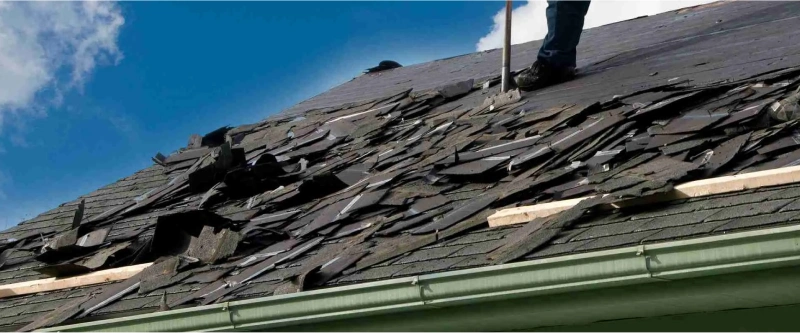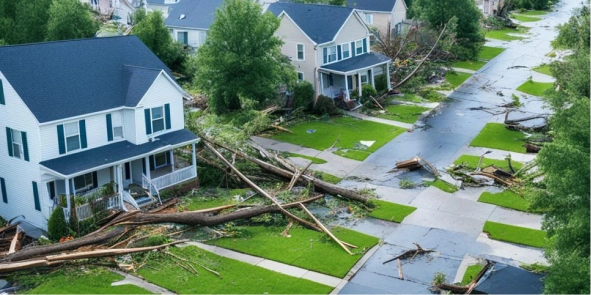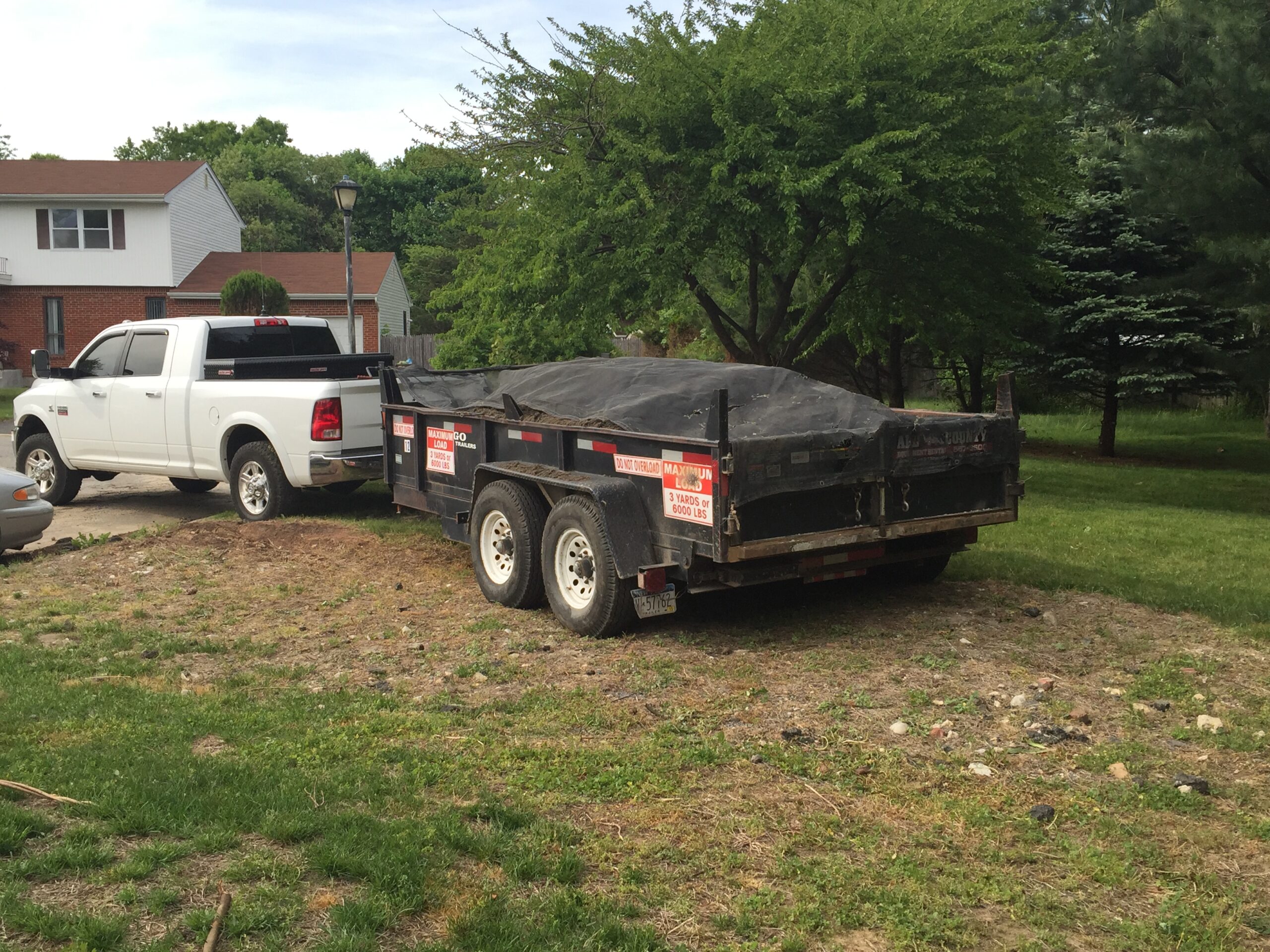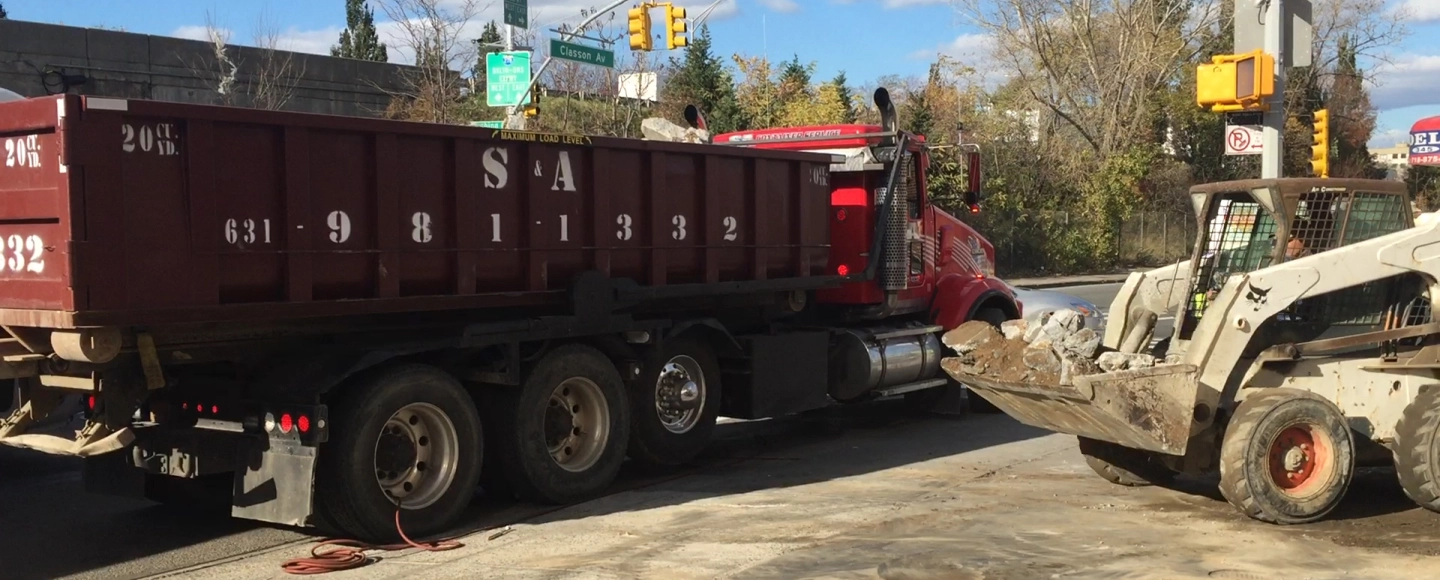Are you a homeowner looking to upgrade your home’s appearance by replacing the old roofing shingles with stylish new ones? You are at the right place.
Replacing the shingles is an exciting task, but proper waste disposal is important to ensure an efficient replacement process. Whether you are doing it yourself or with the help of a contractor, managing the roof debris is one of the most crucial aspects of any roofing project. To do that, rent a right-sized roofing dumpster that can collect and dispose of all the old roof shingles and debris at once.
To choose the right dumpster for cost-effective roofing disposal, it’s important to estimate the weight of shingles and roof debris during the tear-off process. Now the question is how to estimate shingle weight and avoid paying for additional dumpster or overage fees in case of incorrect dumpster size. In this blog, we are going to discuss the common ways to estimate the weight of shingles to help you make your roofing project waste disposal process as efficient and seamless as possible.
Determine the Type and Weight of Shingles
The type of shingles present on your roof plays an important role in determining the overall weight. There are a wide variety of shingles, like asphalt, wood, rubber, etc., each with a different weight and size. Take a look at the most popular ones, along with their approximate weight:
Asphalt Shingles
They are the most common type of shingles for residential roofing. They come in two variants: three-tab and architectural. Three-tab shingles are widely used for roofs in North America, making them the most popular choice for asphalt shingles. They are low-cost and use asphalt as a waterproofing material. The other one is an architectural shingle, which has two or more layers laminated together for more protection and durability. The average weight of Asphalt shingles is between 150 – 400 pounds per square depending on their type.
Rubber Shingles
Composed of synthetic materials, rubber shingles are more durable and easier to upkeep. Rubber shingles can be installed over asphalt shingles as well as individually. The typical weight of a rubber shingle can vary between 150 and 300 pounds per square foot.
Wood Shingles
Wood shingles consist of layered pieces of wood arranged to form a consistent shingle pattern. They add an aesthetic and rustic flair to the roof design. Their average weight ranges between 200 and 450 pounds per square. However, the type of wood influences the actual weight.
Clay Tile
Clay tile is another popular type of shingle that enhances a home’s beauty and elegance. The average weight of a single clay tile is 600 to 1000 pounds per square. Clay tiles are environmentally
friendly, highly durable, and require low maintenance.
Metal
Metal shingles are durable and aesthetically pleasing roofing materials. Different types of metal shingles, such as steel, aluminum, zinc, copper, etc., have different weights. The average weight of a single metal shingle ranges from 50 to 150 pounds per square.
Measure the Roof Area
The simplest way to calculate shingle weight is by calculating the roof area and determining the number of squares. Determine the total roof area in square feet by measuring the length and width of each roof section, then multiplying these dimensions to calculate the area of each square. After that, sum up the areas of all squares to reach the total square foot of the roof.
Once you know how much square feet the roof is, you can easily determine how much roof debris will be produced when it is removed. Using that estimate, you can easily determine the expected weight of the debris and, based on that, select the right-sized dumpster. Let’s understand this point with an example:
Consider the surface area of your roof, which measures 4000 sq. ft. Now to estimate shingle weight:
Firstly, determine the number of squares:
Remember that 1 square is equal to 100 square feet.
So, with this logic, for a 4,000 sq. ft. Roof:
Number of squares = 4000 sq. ft. ÷ 100 sq.ft./square = 40 squares
Then calculate the weight of shingles:
Suppose it is a traditional 3-tab asphalt shingle whose one square weight is 150-190 lbs. To avoid a smaller size or overweighting, we will consider 195 lbs as weight rather than 190 lbs.
Total Weight = 195 lbs/square x 40 squares = 7800 lbs which converts into 3.9 tons.
As a result, the tear-off of a roof with 4,000 square feet of surface area would produce roughly 3.9 tons of shingle debris. You can use this number to figure out how big of a dumpster you need for
the cleanup.
Determine the Number of Shingle Bundles
To calculate the weight of debris generated, another simple way is using the number of shingles bundles you’ll acquire during tear-off. The number of shingles depends on the type and manufacturer. For example, 3-tab shingles weigh less than architectural shingles due to their lack of multiple layers.
On average, a single bundle contains 10 to 29 shingles, and three bundles equals one square, which means 100 square feet. Take a look at the number of shingles of different types in one bundle:
- 3-Tab – 21 standard-size shingles per bundle
- Architectural – 29 shingles per bundle
- Wood – 25 shingles per bundle
- Metal – 10-20 panels per bundle
- Clay Tile – 10-15 tiles per bundle
How to calculate the number of bundles?
To determine the number of bundles needed, start by calculating the total roof area in square feet.
For example, suppose the roof area is 4000 sq. ft, which means the number of squares is equal to 40. With this data, you can easily calculate a number of bundles:
As 3 bundles cover 1 square, so –
Total bundle = 40 squares x 3 bundles/square = 120 bundles
Estimate the Weight of per Bundle
Once you calculate the number of bundles, it becomes easy to calculate the weight of each bundle according to the type of shingle. Here is a basic estimate of weight per bundle for different shingles types:
- Asphalt Shingles: 60-80 pounds per bundle.
- Architectural: 70-100 pounds per bundle.
- Wood Shingles: 100-300 pounds per bundle.
- Tile Shingles: 200-300 pounds per bundle.
- Metal Shingles: 50-150 pounds per bundle.
To calculate the weight of your old roofing, you must first determine how many bundles are on your roof. For example, carrying forward the same example: 4000 sq. ft area and 40 squares, which means the total bundles are equal to 120.
Now, when we take 3-tab shingles and architectural shingles, here is the total weight calculation:
3 Tab Shingles: 60-80 lbs. or pounds per bundle
Total weight: Number of bundle x Average weight
120 bundles x (60 to 80 lbs/bundle) = 7200 to 9600 lbs. or 3.6 to 4.8 tons
Architectural: 70-100 lbs. per bundle
120 bundles x (70 to100 lbs./bundle) = 8400 to 12000 lbs. or 4.2 to 6.0 tons
Using these formulas, you can estimate the number of shingle bundles and the overall weight of debris of a roof tear-off project. This helps you determine the appropriate dumpster size and ensures
that the cleanup process is efficient.
Calculate Shingle Weight via Weight of New Shingles
Another simple yet effective way to calculate the estimated weight of old shingles is by analyzing the weight of new shingles. In most cases, the weight of the new shingles accurately corresponds to the weight of the old shingles, therefore revealing the old ones’ weight. The majority of roof shingle bundles weigh 50 to 80 pounds.
To calculate the weight, simply visit any hardware shop and ask for the weight of the shingle used on your roof. After that, using the above-discussed formula, calculate the number of bundles and multiply the weight of one bundle of shingles by the total number of bundles ordered for your work. For example:
For a 4,000 sq. ft. roof with 2 layers of 3-tab asphalt shingles, 120 bundles, and 70 lbs. weight of one bundle, the estimated total weight of the shingles to be removed would be 8.4 tons.
Total weight: 70lbs/bundle x 120bundles x 2layers = 16,800 lbs. or 8.4 tons
This figure can help in selecting the appropriate dumpster size for the debris. However, this is an approximate estimate because your current shingles may weigh less owing to weathering and deterioration. Still, a basic estimate will help you select the ideal dumpster size.
Choose the Right Dumpster Size
Now that you have determined the weight of the shingles, it’s time to book the roll-off dumpster for disposal. In most cases, a 15-20-yard dumpster can serve the purpose easily; however, if the trash weight is more, consider choosing the larger one. Have a look at different dumpster sizes and their maximum trash limit:
-
Dimensions: 11 ft long x 8 ft wide x 4 ft high
Maximum Weight Limit: 1-2 tons (2,000-4,000 lbs)
-
Dimensions: 22 ft long x 8 ft wide x 3 ft high
Maximum Weight Limit: 2-3 tons (4,000-6,000 lbs)
-
Dimensions: 22 ft long x 8 ft wide x 4 ft high
Maximum Weight Limit: 3-4 tons (6,000-8,000 lbs)
-
Dimensions: 22 ft long x 8 ft wide x 6 ft high
Maximum Weight Limit: 4-5 tons (8,000-10,000 lbs)
-
Dimensions: 22 ft long x 8 ft wide x 8 ft high
Maximum Weight Limit: 5-6 tons (10,000-12,000 lbs)
Why Choose S&A Container Service Roofing Disposal Help?
At our Long Island dumpster rental company, we have been providing affordable, reliable, and reputable dumpsters since 1953. With our expertise, we have assisted numerous homeowners in safely disposing of shingles and other roofing waste, making your roof modeling project a seamless experience.
Choose from various models and sizes, including open-top dumpsters, front-load dumpsters, and compactors ranging from 10 to 20 yards. Benefit from our quick delivery and pickup, along with flexible rental periods, to efficiently clean your site in no time.
Conclusion
Calculating shingle weight is vital to cut roof disposal costs; the wrong size could mean paying for an extra dumpster or unused space. You can determine weight through three methods: estimating roof area, bundle count, and old shingle weight. We’ve included simple examples to help clarify the calculations. When planning a roof replacement, be sure to calculate shingle weight and choose
the appropriate dumpster for seamless waste management.
Frequently Asked Questions
How much area does one bundle of shingles cover? A single bundle of shingles covers approximately 33.3 square feet of roof space. However, this varies depending on the shingle type and manufacturer.
What factors do I need to consider while selecting the dumpster size for roof waste?
Roof Size: The larger the roofs, the more space for debris will be required.
Number of Layers: The amount and weight of the debris will rise with more shingle layers, necessitating the use of a large dumpster.
Type of Shingles: Architectural shingles and other heavier shingles will need a dumpster with a greater weight capacity.
How can I save money on Roof Disposal costs?
Avoid Overpaying: Select the right dumpster size that fits your project needs without it being too large or too small. Overestimating can lead to paying for unused space and underestimating can cause you to pay for additional dumpster.
Compare prices: Compare quotations from various dumpster rental businesses and select the one that provides the needed size at a lower rate.
Remove Shingles Yourself: There is some labor cost for removing the shingles. If possible, consider removing the shingles on your own to cut down on labor expenses. Remember to adhere to safety protocols.
Local Recycling Centers: Many cities have recycling centers that accept shingles debris for recycling. Recycling is a cheaper option than dumping in a landfill.
Bulk Disposal Discounts: If you’re disposing of a large volume, ask for bulk disposal rates.



